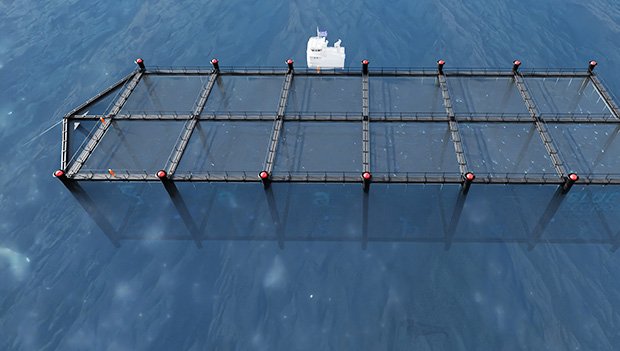
Scientists from the University of Queensland have taken a big step forward in fish farming by creating a new kind of fish pen that can be used in deeper parts of the ocean.
This pen, called SeaFisher, is designed to be both affordable and strong, making it possible to farm fish in areas that were previously too challenging to reach.
Professor Chien Ming Wang, who played a key role in the project, explained that the need for more space is pushing fish farms into deeper waters.
This move is essential for meeting the world’s increasing demand for seafood without harming coastal environments.
However, moving farms further offshore comes with its own set of challenges, like dealing with big waves and storms that can damage the pens.
The SeaFisher pen is a clever solution to these problems. It’s made from high-density polyethylene (HDPE) pipes, which are held together with special brackets and connectors.
This design gives the pen the strength it needs to withstand the ocean’s forces while being light enough to manage easily.
One of the coolest features of the SeaFisher pen is how it deals with bad weather. When a storm is coming, water pumps fill the pen’s pipes with water, making it sink below the surface and out of harm’s way.
Once the storm passes, the water can be pumped out, and the pen floats back up. It also has a shield in front to block debris and a tough net to keep predators away, ensuring the fish stay safe.
Compared to other offshore fish farming options, the SeaFisher pen is much more cost-effective, with an initial cost of about $6 million. This is significantly less than the up to $180 million price tag of some existing structures.
Despite its lower cost, SeaFisher can produce ten times more fish, making it an incredibly efficient option for farmers.
The pen’s design allows for multiple 20-meter cubic cages to be linked together, making it easier to take care of the fish by feeding and harvesting them.
Each cage can hold up to 24,000 fish, offering a huge potential to boost seafood production.
The system is also designed to be eco-friendly, using a single anchor that minimizes damage to the ocean floor and can even be adapted to grow seaweed, which benefits from the waste produced by the fish.
This innovative design is now patented, and the team is moving forward with testing scale models before building full-sized prototypes.
The project, a collaboration with experts from Griffith University, the University of Tasmania, and industry partners, represents a significant leap towards more sustainable and productive fish farming.
The findings are detailed in the Journal of Marine Science and Engineering, marking a promising new chapter in the blue economy.



